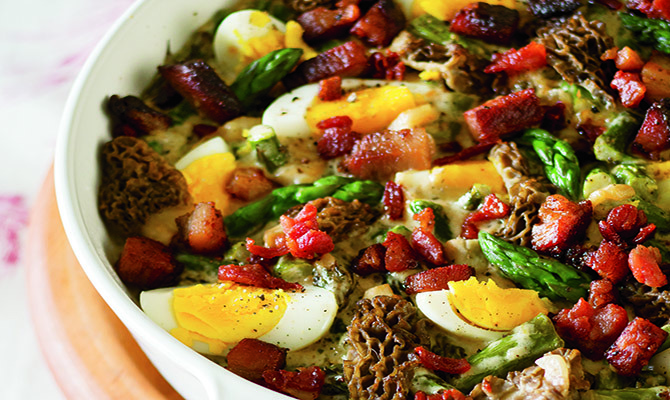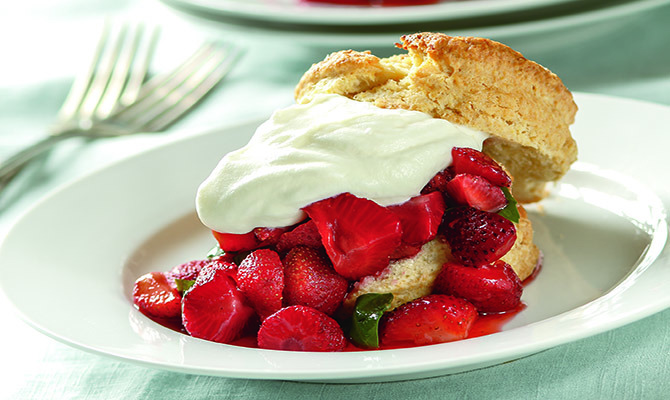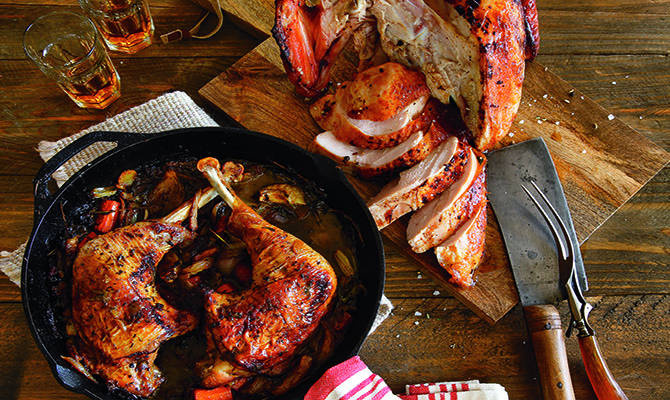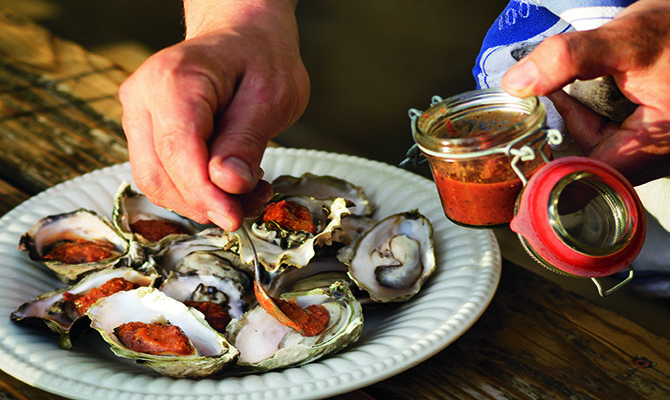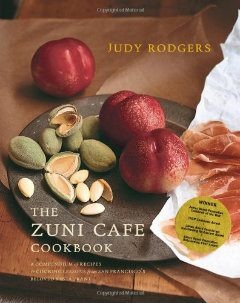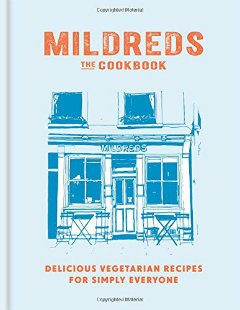'Waste Nothing': An Interview With Adam Sappington, Author Of The 'Heartlandia' Cookbook
Adam Sappington takes a holistic approach to his cooking. He uses his experience as a whole-animal butcher; his childhood memories; and the restaurant he runs with his wife Jackie, the Country Cat, for inspiration. Cooking alongside someone for 20 years was bound to put them in sync, which is why the writings and recipes from this husband-and-wife duo flow so seamlessly in Heartlandia: Heritage Recipes from Portland's The Country Cat.
With a hint of nostalgia and a longing to recreate childhood taste memories, Adam and Jackie embark on a journey that their readers, whether they are from the heartland, West Coast, or East Coast, can identify with. At the heart of the book is a nostalgia for food's past; Adam's love for his great-grandmother's fried chicken and Jackie's "quiet obsession" with birthday cakes brought on by a childhood of over-the-top confectionary creations are both personal and relatable memories.
Adam's attention to detail in his recipes, which has made the Country Cat so well-known; his respect for the animals he butchers himself; and his delicate handling of fresh, local ingredients all find their way into this cookbook. It serves as both a record of their childhood food memories, and a study on what makes American cuisine American.
We had the opportunity to talk with Adam to discuss his cookbook, restaurant, and "waste nothing" philosophy on cooking:
The Daily Meal: Can you tell us a little bit about your philosophy on food and cooking?
Adam Sappington: My philosophy on food, cooking, and lifestyle all kind of fall into one big pot. The whole catalyst for the book was me going back and targeting memories that started to make a big impact on me through osmosis. I grew up in Missouri, and we had fried chicken every single Sunday night. Once I began to cook and really become attached to what those food memories meant to me, that's when it started to resonate with me why I wanted to write the book.
When it comes to cooking, I have a very local, sustainable, and whole-animal approach to food. I have been butchering for about 20 years, and I taught myself because I wanted to be a better cook. Through the process of butchery, I became more intuitive, because you understand how the animal moves. Through that you become more in tune with how those muscles need to be cooked — it is this big process.
My time at Wildwood was very shaping for me because Cory Schreiber was my mentor. He had this philosophy of doing farm-to-table food, bringing it in the '90s from San Francisco to Portland, Oregon. I cooked with Cory and stayed there for 11 years, and that is why I cook the way I do.
And how does that influence the recipes in this book?
The whole-animal butchery, knowing how to cook the right cut, was the inspiration for me and how the chapters fell into place. These are recipes I have done for years that come to me through the food, the process, and the region I am in at the time. My Midwest background was some of the inspiration for how some of the food actually gets prepared.
The introduction to your book talks about the importance of the shared meal, as well as the role of family and friends in your cooking. How does that affect the story you are telling through your recipes?
The recipes are meant to be shared, they are meant to be explored, and they are meant to be on a table family-style with people that you love and care for and want to be with enjoying the fruits of the labors, so to speak. The whole concept of the book is to have simple, approachable recipes that everyone can share tableside on a daily basis.
Are there any food memories that show up in this book either anecdotally or in a recipe?
Absolutely. Fried chicken is the whole reason my restaurant was built. That is my favorite food in the world, and my last meal will be fried chicken, mashed potatoes, and gravy — hands down. I eat fried chicken pretty much every single day because I have to make sure it tastes right, and I just can't get enough of it. That was what inspired the restaurant, and the book, too. As you read through it, you will see and understand that the fried chicken that my great-grandmother made with me as a child was very inspirational. It affected my taste memories as a child and further into my career, inspiring me to make the best fried chicken that I could possibly make in the world — and I think we do.
The process of taking the chicken, de-boning the chicken, soaking the protein in salt water for a day, then buttermilk, then dredging it, then letting it sit for two hours, only to finally take the fat left over from the cow that we butchered ourselves, and render it down to cook the chicken in that fat in the cast-iron pan... that is the whole story of what the restaurant is about, because it is an all-encompassing, whole perspective of what we do and how we do it, wasting nothing.
How would you want readers to approach — and use — this cookbook?
I want readers to use this cookbook with a very relaxed understanding that all of these recipes have been tried and retried 10-plus times, that they are all simple and easy approaches to maximize the flavor in the food with the least amount of manipulation possible.
How do you translate these food memories into your unique flavor and use of ingredients?
As I began cooking and starting to think about American food and how I think American food should be interpreted, it really made me go back into my childhood and think about how these recipes and these flavors really developed the palate that I have. Producing the food that I do and teaching it to my cooks allowed me to think about how these recipes play into American culture, but also play into my perspective — and how I think food should be prepared in the most holistic way with the least amount of manipulation.
What is the take-away for readers? What do you hope they'll get from this book?
I think that there is a real message there that cooking is fun, cooking is easy, and cooking should be something that [immerse yourself in either as a solo pursuit or alongside another cook.] This is a book for people to explore — from middle America to the Pacific Northwest (where I cook), you can make any of these recipes anywhere.
You have mentioned the importance of food memory and cooking with loved ones. What is it like cooking alongside your wife Jackie every day?
We have cooked together for 20 years, and we know each other's movements. One of the lovely things about cooking with Jackie are the unspoken communication. It's all based on movement and muscle memory. When you are in the kitchen, listening to music, having a glass of wine, and you aren't even speaking, the only noise is the music and the crackling of the pan. That is one of the greatest experiences for me, because that is exactly what the book is about. That is what I want people to feel when they make these recipes.
Anything else you want to tell us about the book?
I just want this book to come across as a very approachable book for anyone to pick up, send as a present or take home, and enjoy cooking.
Want to try a recipe?
Asparagus CasseroleAdam Sappington
Growing up, my mom made asparagus casserole using a recipe from an old church cookbook. It called for evaporated milk, canned asparagus, and hard-cooked eggs, and I loved it. Years ago, I decided to create my own version, elevating this side dish with fresh asparagus and morels. The result is this lighter, looser casserole topped with crispy bacon and hard-boiled eggs. It's great with our hickory-smoked pork shoulder or "Sappy Spice" grilled chicken. If you can't find morels, you can use big button mushrooms or King oyster mushrooms instead. (Cut the mushrooms into quarter-inch slices and skip step three if you use something other than morels.) —
Basil-Infused Strawberry ShortcakesJackie Sappington
My summer is never complete until I dive into a plate of strawberry shortcake while I sit in my backyard enjoying the breeze. I've given this backyard barbecue favorite a playful touch by adding basil to the strawberry topping. That hint of basil gives the dessert an added dimension that tastes of summer to me. —
For the Basil-Infused Strawberry Shortcakes recipe, click here.
Brined and Smoked Thanksgiving TurkeyAdam Sappington
I'm proud to say that I've never cooked a turkey the traditional way in my entire life. Here's why: When you break down the whole bird into parts, you can cook each part in the most forgiving and painless way possible. Simply brine and smoke the breast and marinate and braise the legs, and boom — it's done! When it comes time to serve that bird, you'll be the hero who cooked a juicy, tender Thanksgiving turkey that everyone will talk about for years to come. I'll be damned if anyone cooks a whole turkey again after trying this process. —
For the Brined and Smoked Thanksgiving Turkey recipe, click here.
Chanterelle, Green Bean, and Freekeh Salad with Huckleberry VinaigretteAdam Sappington
I discovered freekeh during a time in my cooking career when I was searching for new grains to work with. I love the roasted green wheat's earthy, smoky flavor and ability to act like farro in a grain salad or like rice in risotto-type dishes. Here, I serve the toothsome grain in a late-summer salad with crisp green beans and chanterelles cooked in brandy and butter. The full-flavored huckleberry vinaigrette ties everything together with a hint of sweetness. (You can substitute blueberries if you can't find huckleberries.) You will have leftover vinaigrette; use it to punch up everyday green salads or spoon it over grilled chicken or pork. —
For the Chanterelle, Green Bean, and Freekeh Salad with Huckleberry Vinaigrette recipe, click here.Grilled Oysters with Homemade Barbecue SauceAdam Sappington
Grilling oysters is a nice variation that lets you enjoy them in an outdoor setting. Grilled oysters pick up a bit of smoke, so pairing them with a homemade barbecue sauce is an obvious choice. In my barbecue sauce, I only use black pepper for heat, because I'm looking for the warm background notes, not the hot upfront heat you would get from chiles or chile flakes. —
For the Grilled Oysters with Homemade Barbecue Sauce recipe, click here.
Morel and Spring Vegetable HashAdam Sappington
This hearty vegetarian hash kicks off spring by combining English peas, baby spinach, morel mushrooms, and spring onions with crispy potatoes. Farmers harvest mild spring onions before the bulbs grow to full size; they have small white or deep purple bulbs and tall green tops. (Use two sweet onions if you can't find spring onions at a farmers market or upscale grocer.) Morels are my favorite mushroom to use in this hash, but you can also substitute half a pound of your favorite mushroom if you don't want to splurge on morels. Serve the hash on its own or dish it up with poached eggs and toast to make it a more substantial meal. —
For the Morel and Spring Vegetable Hash recipe, click here.
More restaurant-inspired cookbooks we like.
Mildred's: The Vegetarian Cookbook
By Mitchell Beazley
This vegetarian cookbook makes picking what delicious recipe to make for meatless Monday so much more challenging. The nearly 300 pages of this cookbook are filled with anecdotes and recipes straight from the iconic Soho, London kitchen that has been serving delicious vegetarian meals for more than 25 years.
Roberta's Cookbook
By Carlo Mirachi, Brandon Hoy, Chris Parachini, Katherine Wheelock
Roberta's pizza put the farm-to-table concept on the map and turned the quiet immigrant Williamsburg, Brooklyn neighborhood into a mecca for "foodies" and locavores. Now, Roberta's cookbook brings this iconic pizza into your home kitchen with accessible, simple recipes that celebrate seasonality and fresh, simple flavors.
The Zuni Café Cookbook
By Judy Rogers
This cookbook published in 2002 has quickly become a kitchen staple. The famous Zuni Roast Chicken recipe alone makes this book well worth the purchase price.
Click here for more recipes from cookbooks.
Angela Carlos is the Cook Editor at The Daily Meal. Find her on Twitter and tweet @angelaccarlos.
